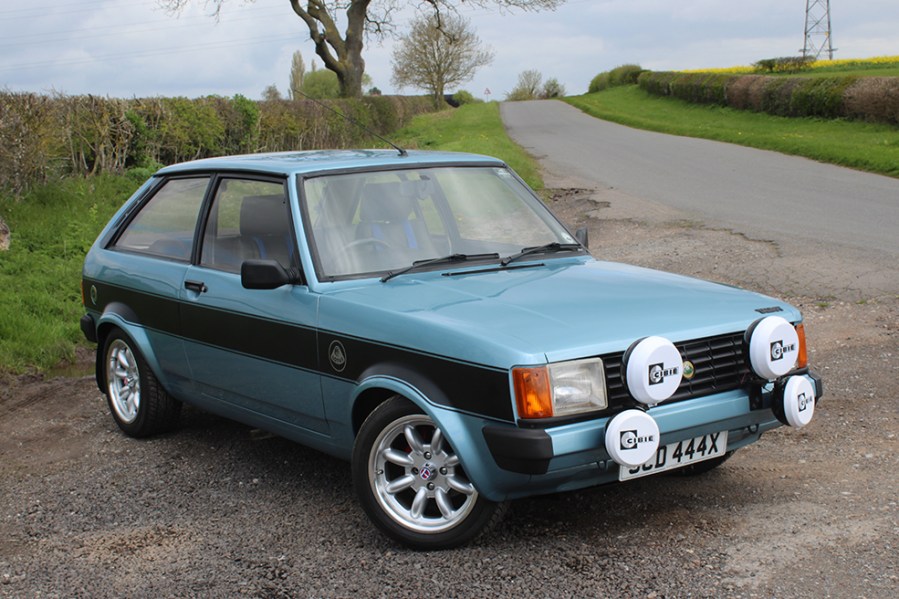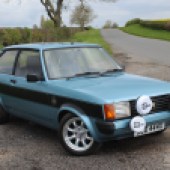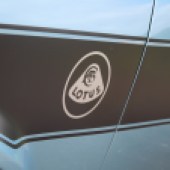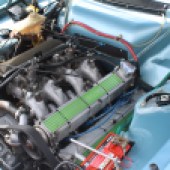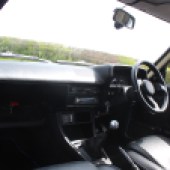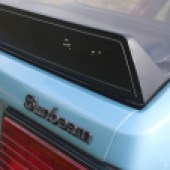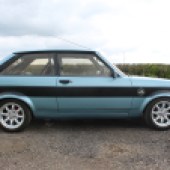We take to the road in a rallying legend that still impresses today – the Talbot Sunbeam Lotus
Words and images: Jack Grover
The standard Chrysler Sunbeam was a stopgap product, needed only when Chrysler UK sought government support, which was offered on the condition that a new small car be built at the firm’s Linwood plant. Time and budgets, were very tight, and the need for as much British content as possible ruled out simply sharing a product from Chrysler Europe. The result was the Sunbeam, based on a shortened version of the old Chrysler (née Hillman) Avenger platform (and thus, unusually for a supermini, rear-wheel drive) clothed in a sharp body penned by Roy Axe. The new car was dubbed the Sunbeam, reusing the former Rootes marque as a model name.
The familiar Avenger mechanicals already had a significant tuning industry built up for them, and the Sunbeam’s rear-drive layout, low weight, compact size and stiff body caught the attention of rally-goers. Chrysler itself provided a hot version in the form of the Sunbeam Ti with a twin-carb 1.6-litre OHV engine, and this model was popular with privateer outfits. But a proper campaign in the World Rally Championship would need something more potent, and so Chrysler went to Lotus to produce a truly hot Sunbeam. As well as a 2.2-litre 900-Series engine and a ZF transmission, Lotus gave the Sunbeam lower and stiffer suspension, uprated anti-roll bars and the new drivetrain required modifications to the bodyshell in the form of a wider transmission tunnel. By the time the Sunbeam Lotus was ready for public sale, Chrysler had tired of its ailing European division and sold it to Peugeot who resurrected the vintage Anglo-French marque, Talbot.
The Talbot Sunbeam Lotus is a pretty good package in standard form – with 150bhp from a race-bred short-stroke DOHC engine, rear-wheel drive, unassisted steering and a kerb weight still in three figures, it was many performance fans’ idea of the perfect do-it-all car. But when you consider that the rallying versions of the Sunbeam Lotus had around 250bhp from the same engine, it’s little wonder some people wonder what the standard cars would be like with more power.
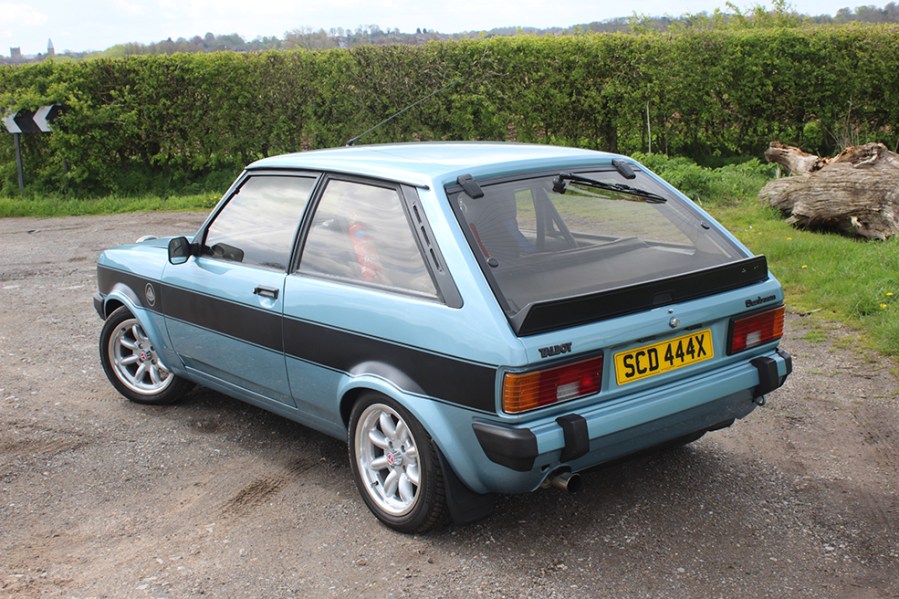
That’s what a previous owner of this Sunbeam Lotus thought, since it was sent to well-known specialist Skip Brown in 1986 (with 48,000 miles on the clock) to have a big-port cylinder head fitted, taking power up to approximately 210bhp at the flywheel and 175bhp at the wheels, measured at the time on a rolling road. That work also included improved intake and exhaust manifolds and a reconditioned steering rack, plus the fitment of a limited-slip differential, a new clutch and rebuilt front suspension. The car’s history file is unfortunately missing the invoices for this work, but does include a written statement from a subsequent owner confirming the work after contacting Skip Brown.
Of course, it’s been a long time since 1986, but the Lotus has gained just 13,000 miles since then. The odometer now shows just under 61,400 miles, which is confirmed by a stack of MoT certificates dating back to 1985. The history file does also include a lot of original material such as brochures, handbooks and Talbot service booklets.
Over 40 years is plenty of time for a Talbot to succumb to rust, regardless of how few miles it has covered. But there are no such worries here. The Moonstone metallic paint with contrasting black stripes is in excellent condition and there are no signs of corrosion in the wheel arches, sills, valences, wings or around the headlamps or window frames. Equally there are no scuffs or scrapes on the bumpers, the corners of which are still a dark, glossy black. The only part even worthy of being described as a blemish is a small area in the lip of the rear wing corner on the nearside lamp unit, where there is evidence of the paint being touched up. As well as the Sunbeam Lotus-spec rear spoiler, this car has been fitted with a quartet of large Cibie spot lamps on the front and 15-inch Minilite-style alloy wheels (complete with Talbot logos on the hubs). The original wheels are provided with the car and have been recently repainted.
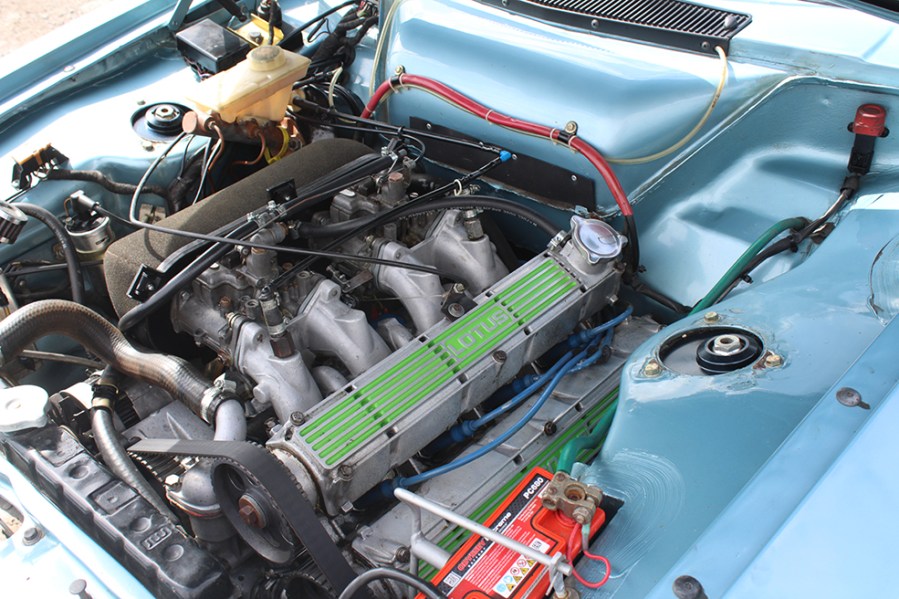
It’s striking how simple and surprisingly crude the interior of this car is, when contrasted to the equipment and quality levels you’d find on its modern equivalent. But the early 1980s were a very long time ago and the Sunbeam was, in non-Lotus form at least, a car found very near the lower tiers of the car market. That said, all the hard, hollow-sounding plastics, flimsy switches and big gaps between the trim pieces are the norm for a Talbot of this age and it is all still here in original condition, for better or for worse. And it’s not split, cracked, warped or broken. The electric windows and cabin fan still work and the leather items – the big bucket seats and the wrapping on the steering wheel – are still smooth and unblemished.
Here the inner wings, suspension top mounts and bulkhead are immaculate, as are the seams between them. The performance enhancements to the engine are not immediately obvious, although the big Pipercross air filter and the high-capacity breather system and catch tank hint at them, asd oes the racing-style lightweight battery. The very visible timing belt is in good condition, as is the less on-show auxiliary drive belt. Hoses for coolant, vacuum, fuel and air all look recently fitted. There are no oil leaks and no signs of head gasket trouble in the oil or on the filler cap The coolant is also clean and the brake fluid looks fresh.
That high-tech battery delivered some frantic cranking speeds, but the engine caught quickly and could do without choke almost instantly. It runs smoothly but with the brash rasp that characterises the Lotus 900 Series units. The non-standard aluminium alloy gear knob leaves no clue as to what the gear pattern is, which is especially treacherous since the Sunbeam Lotus has a bespoke ZF gearbox with a ‘dog leg’ shift, with first gear being found backwards under reverse. The heavy, quick-acting clutch is as you’d expect from a high-performance machine.
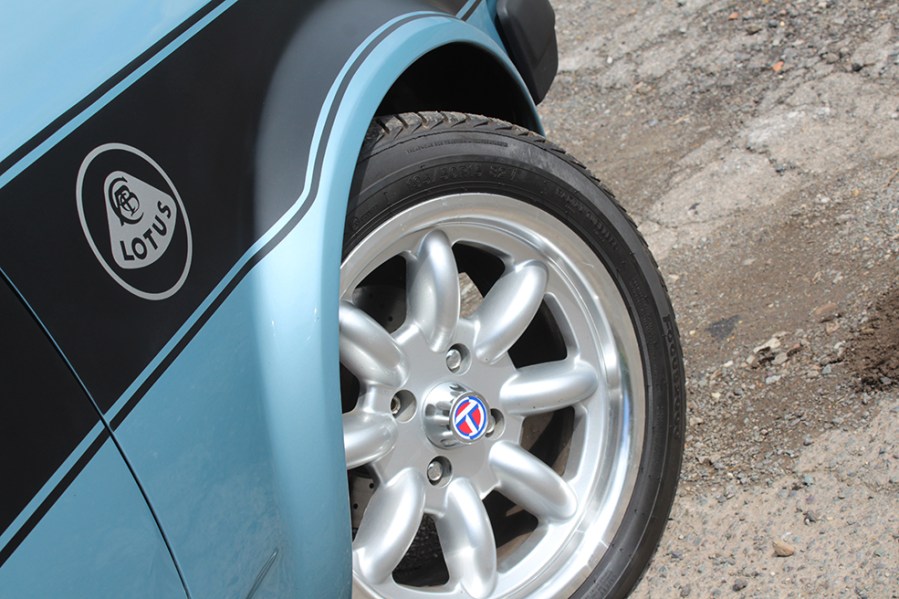
At the time of our drive, the Sunbeam Lotus was in ‘as arrived’ condition and had not been through Sherwood’s workshop. So we did have to contend with one niggle – an over-tightened throttle cable that, once the engine was warmed up, held the throttles open slightly more than they should be at idle. This meant that the revs didn’t drop as sharply as they would during gear changes, and that when at idle the revs slowly rose up to the 2000rpm or so mark if left long enough! This did not disrupt the sheer thrill that is the Sunbeam Lotus driving experience though – if anything it made for even quicker (almost ‘self rev-matching’) changes on the smooth gearbox with a long but narrow throw. And, on the other side of the coin, the throttle response was absolutely razor sharp. The instantaneous nature of a lightweight, naturally aspirated short-stroke engine on twin Dell’Orto carbs is incredible, and with over 200bhp on tap it can hurl a car as light as the Sunbeam at incredible speeds when pushed.
In fact, I’d say that the real joy of the Sunbeam Lotus is driving it at about three-quarters of its capabilities – enough to savour both the noise of the engine and the lovely balanced handling. Rear-wheel drive hatchbacks are a rarity, and the Sunbeam stands out by possessing a poise akin to a classic British sports car. The steering, unencumbered by the need to handle tractive duties and unassisted, is delightfully smooth and full of feel.
And you don’t have to be vigorous with the car to feel the typical rear-drive sense of the car pivoting around your waist in corners. As befits a car set up by Lotus, not only is the body control magnificent, giving flat but planted cornering, but the ride is surprisingly cossetting so long as you don’t go near any seriously choppy road surfaces. That aside, the Sunbeam never fidgets or shudders. For all its rally provenance and capability, this is still a car that you could readily use as just a three-door hatchback.

Talbot Sunbeam Lotus: our verdict
That’s why the Sunbeam Lotus is so legendary. It is in many ways the ultimate hot hatchback from that breed’s ultimate decade. Cars blending such outright performance and lightweight delicacy are very rare in the modern world, and the ones that do exist are not four-seater hatchbacks! Speaking for myself, I think I would be happiest with one with its stock 150bhp, but this one is a lovely low-mileage example in fantastic and (once the throttle cable has been unwound a couple of turns) ‘ready to use’ condition.

